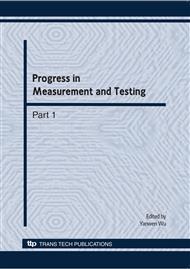[1]
Stewart, D. A Platform with six-degrees-of-freedom. in Proc. Inst. of Mechanical Engineers, vol. 180, part 1, no. 5, 1965-1966, pp.371-386.
Google Scholar
[2]
Nahon M A, Reid L D. Simulator Motion-Drive Algorithms: A Designer's Perspective [J]. J Guidance, 1989, 13(2): 356-362.
Google Scholar
[3]
Martin E. A. Motion and Force Simulation Systems I, Whole-body Motion Simulators. 13th Annual Flight & Ground Simulation Update, State University of New York at Binghamton. January (1997).
Google Scholar
[4]
Peter R. G, Lloyd D. R. Motion Washout Filter Tuning: Rules and Requirements. AIAA-95-3408-CP.
Google Scholar
[5]
Peter R. Grant, Bonnie Yam. Effect of Simulator Motion on Pilot Behavior and Perception. Journal of Aircraft. 2006, 43(6).
Google Scholar
[6]
Sunjoo K. Advani. Revising Civil Simulator Standards-An Opportunity for Technological-Pull. Modeling and Simulation Technologies Conference. AIAA, 2006-6248.
DOI: 10.2514/6.2006-6248
Google Scholar
[7]
Proposed Study of Simulation Validation/Fidelity for NASA Simulators. Ad Hoc Advisory Subcommittee Avionics, Controls and Human Factors, List of Definitions, Committee Tasks, and Study Scope, Nov. (1979).
Google Scholar
[8]
Ronald A. Hess. Pilot Modeling With Applications to the Analytical Assessment of Flight Simulator Fidelity. AIAA, 2008-6682.
Google Scholar
[9]
Hosman, R. J. A. W. Pilot's perception and control of aircraft motions. Ph.D. thesis, Delft University of Technology. Delft University Press, Delft.
Google Scholar
[10]
Hosman, R. J. A. W., Advani, S. K., and Haeck, N., Integrated Design of Flight Simulator Motion Cueing Systems, Proceedings of the Flight Simulation Conference Developments in Simulator Systems- Integration and Effectiveness, Royal Aeronautical Society, London, 2002, p.16.
DOI: 10.1017/s000192400000049x
Google Scholar


